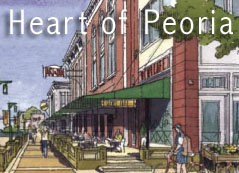This is the first year we’ve put our kids in District 150. Before this year, my oldest daughter had attended a private school. Private schools, of course, don’t get any public money. Here’s how much public money goes to District 150, shown both in aggregate and per pupil:
| Instructional Expenditure Per Pupil*: | $6,297 |
| Operating Expenditure Per Pupil*: | $11,521 |
| Local Property Tax Revenue*: | $65,921,368 |
| Other Local/State/Federal Revenue*: | $84,928,611 |
One would think with that much revenue and per-pupil expenditures, all the schools’ needs would be more than met. Not so. First, we had to pay an additional fee for book rental. For our two school-age children, that came to $100. Then there have been the fundraisers — lots of fundraisers — more fundraisers than we ever had at a private school with no public funding and considerably less per-pupil (tuition) costs:
| School fundraising requests received within first two months of school year: |
4† |
| PTO fundraising requests received within first two months of school year: |
3‡ |
| Charitable fundraising requests received within first two months of school year: |
2 |
| TOTAL: | 9 |
Note that this is just the fundraising requests received in the first two months of the school year. Who knows how many more are on their way. I don’t begrudge the charitable fundraisers, but include them in the chart merely to show the totality of how many requests for funds bombard parents of District 150 students — parents who, like all taxpayers in District 150, are already spending an enormous amount of money in property taxes, state taxes, and federal taxes to support public education.
Lest you think I’m being petty here, take a look at those numbers again. Totaling the per pupil instructional and operating expenditures per pupil, that comes to $17,818… per pupil. High school tuition at Peoria Christian School is only $4,932 per year. According to Peoria Notre Dame’s website, their “projected cost for educating a student for 2008 – 2009 is over $7,000.” That $7,000+ is paid for by a combination of tuition, subsidies, fundraisers, and some miscellaneous revenue sources.
Meanwhile, at District 150, they receive nearly $18,000 per student in public money. So why the need for additional private funds in the form of so many fundraisers? My question is basically this: Where does all the money go?
__________
*Source: Interactive Illinois Report Card, 2005-06 Fiscal Year
†Magazine subscriptions for computers; General Mills Boxtops for cash; recycling of aluminum cans for cash; Usborne Books’ “Reach for the Stars” for school & classroom library books.
‡Spirit Wear for cash; Bergner’s Community Day for cash; Butter Braids frozen pastry/cookie dough for cash. Cash used for Accelerated Reader program, subscription to Time Magazine for Kids, and other programs.

 The city’s Planning and Growth Department is spearheading an effort to review the portion of the Land Development Code (LDC) that deals with form-based code districts “to determine if all the regulations are performing as anticipated and to ensure compatible development which meets the purpose statements of the code.” Toward that end, they have done two things:
The city’s Planning and Growth Department is spearheading an effort to review the portion of the Land Development Code (LDC) that deals with form-based code districts “to determine if all the regulations are performing as anticipated and to ensure compatible development which meets the purpose statements of the code.” Toward that end, they have done two things: